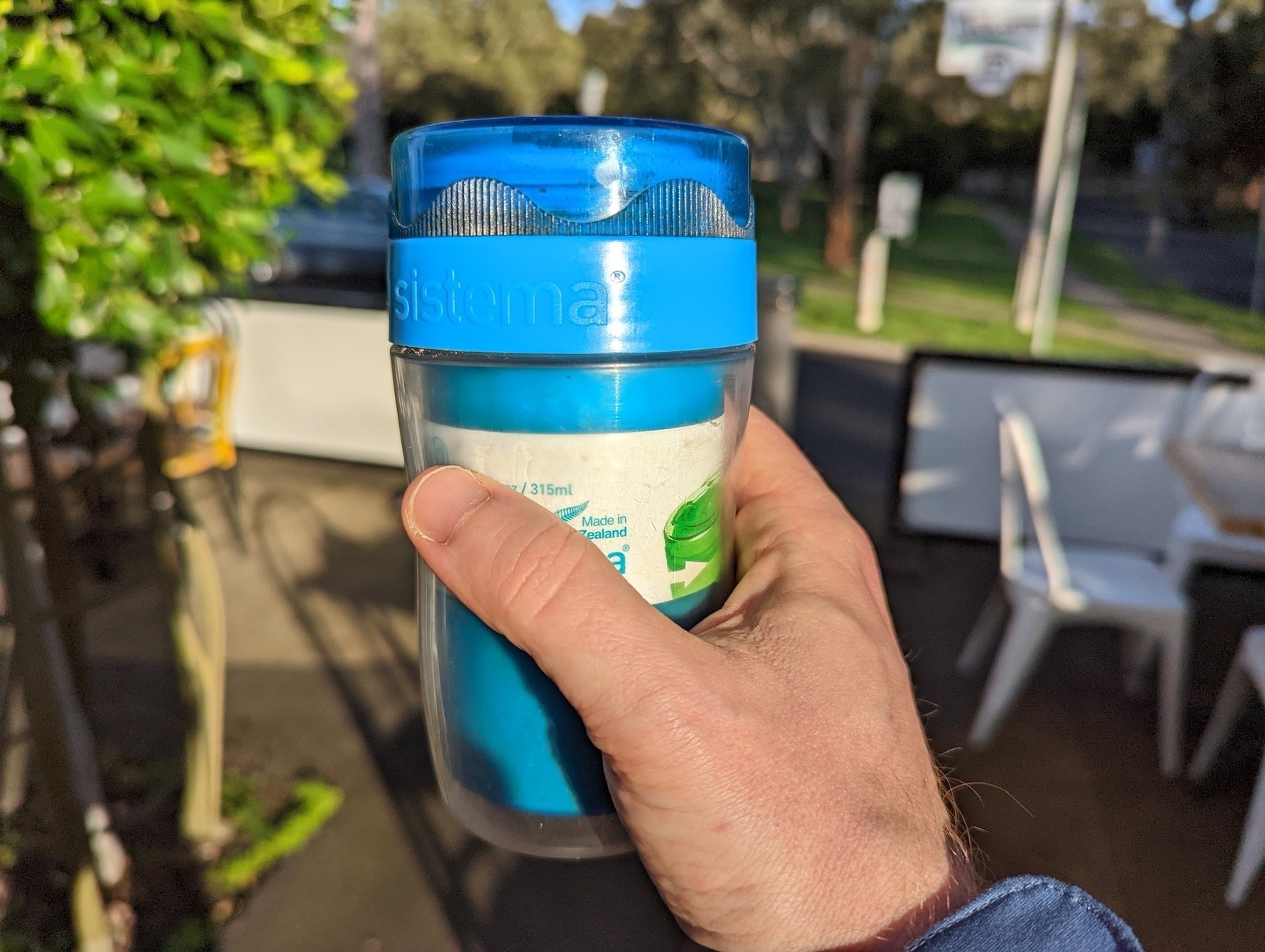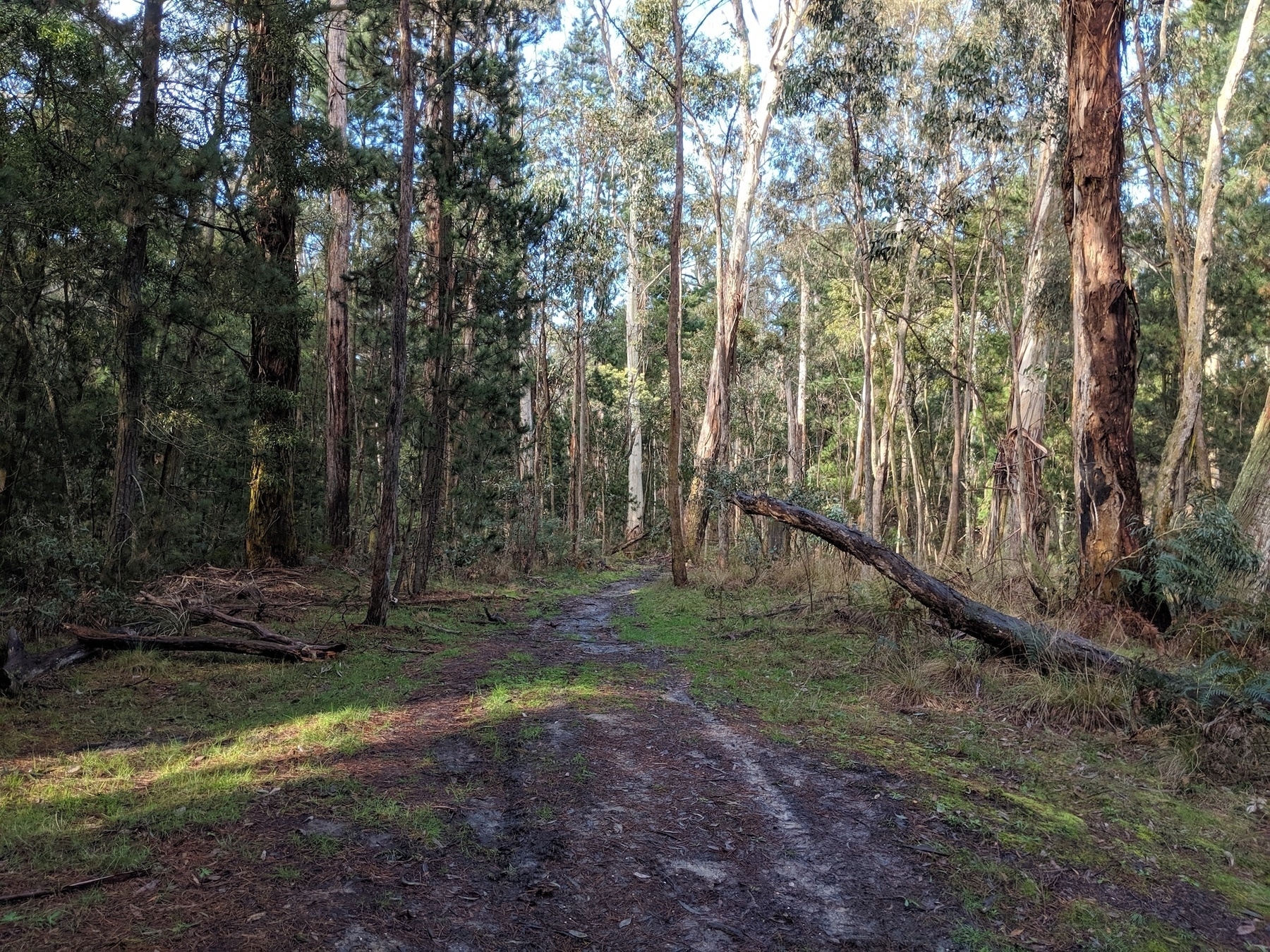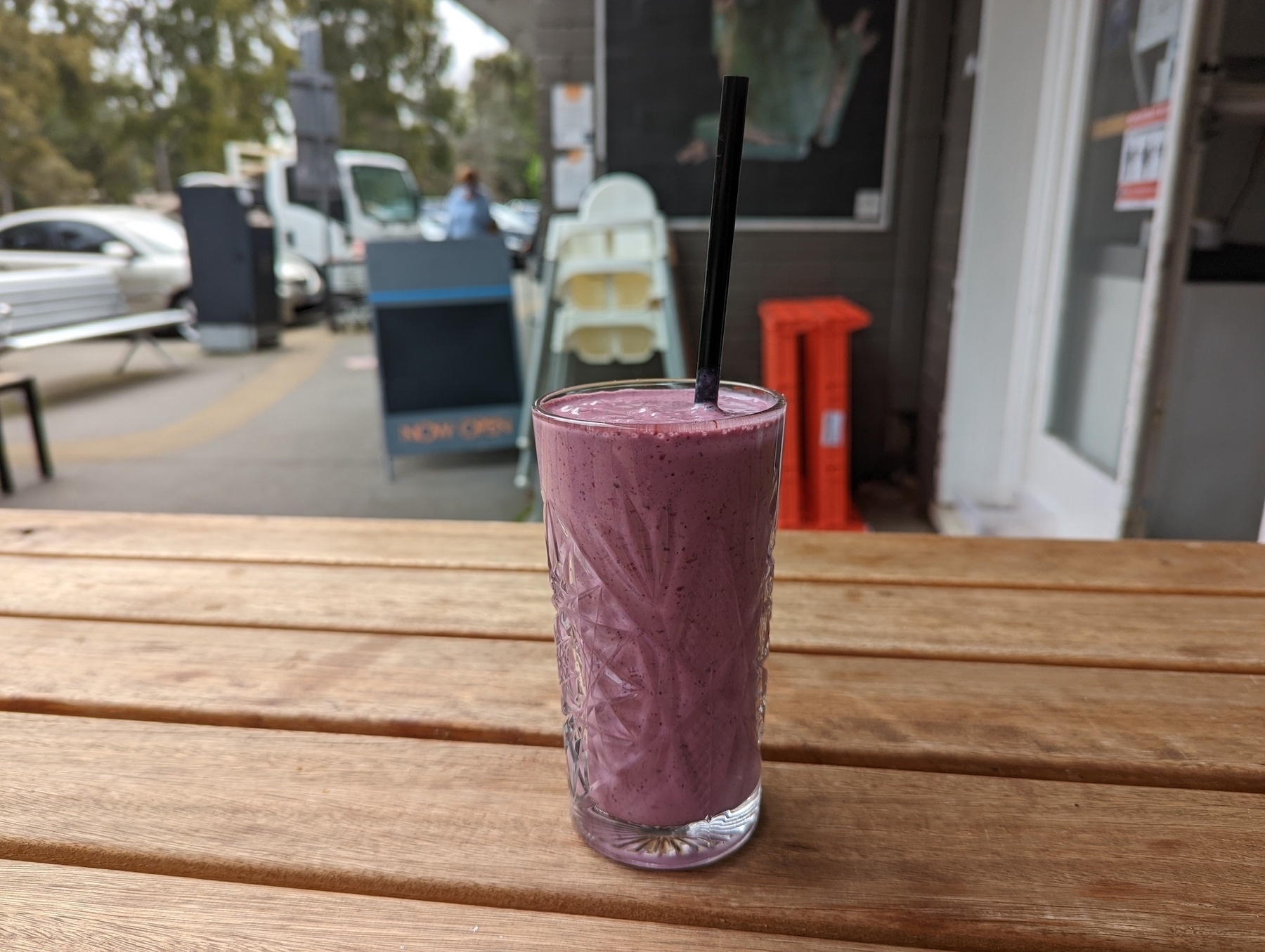-
Day 25: mountain
Warburton, taken in March 2020. #mbmay

-
Day 24: intricate
#mbmay

-
Day 23: plain
Although quite plain in appearance compared to other native birds, what the currawong lacks in pigments they more than make up with their wonderful melodic calls. I never get tired of listening to it. #mbmay

-
Day 22: textile
Wool shopping with my Nonna about a month ago. Trying to decide the best colour and thickness for a blanket. #mbmay

-
Day 21: symmetry
Okay, I’ll come clean. I have no idea what this is. It’s located in a park I usually walk through, and there’s nothing else like this around. In any case, it’s the closest thing that’s symmetrical I see in my daily life. #mbmay

-
The cafe that I go to on weekends is just across the road from a polling station, so it’s having a bumper of a day. A lot of people getting take-away coffees before lining up to vote. I’ve not seen it this busy since it opened two years ago.

-
Day 19: indulgence
Full disclosure: this isn’t the type of muffin I actually ordered. My goto is usually raspberry and white chocolate, but today the cafe made a mistake. Even so, I got to admit that this was nice. 😋 #mbmay

-
Booked flights yesterday for Canberra. Got my itinerary and confirmation email. Ok, good.
Then got an email offering “ideas” of places to go in Canberra. Then one welcoming me to the booking agent’s newsletter.
Stop! Guys, you had it right after the second email.
-
Day 18: random
Tails. #mbmay

-
Day 17: hold
Holding my reusable cup as it’s holding my morning coffee. #mbmay

-
WWDC Videos In Broadtail
Some more work on Broadtail. This time, I added the ability to use it to download Apple WWDC videos. The way it works is based on the existing RSS feed concept. In order to get the list of videos for a particular WWDC year, you “subscribe” to that by setting up a feed with the new “Apple Developer Videos” type. The external ID is taken from the URL slug of the web-site that Apple publishes the session videos. Continue reading →
-

Currently reading: Build: An Unorthodox Guide to Making Things Worth Making by Tony Fadell 📚
So far an excellent read.
-
Day 16: time
My kitchen clock, which occasionally breaks in such a way that it’s not even right twice a day. #mbmay

-
Day 15: clouds
Taken during the Summer, which is usually when we get our most interesting cloud formations. #mbmay

-
Watching the Google I/O presentation on Google Wallet reminds me of all the presentations I’ve watch over the years of products and frameworks that Google touted, then killed off. I wonder how long Google Wallet will last. 😕
-
Day 14: fence
#mbmay

-
Day 13: community
#mbmay

-
Cloud Formation "ValidationError at typeNameList" Errors
I was editing some Cloud Formation today and when I tried to deploy it, I was getting this lengthy, unhelpful error message: An error occurred (ValidationError) when calling the CreateChangeSet operation: 1 validation error detected: Value ‘[AWS:SSM::Parameter, AWS::SNS::Topic]’ at ’typeNameList’ failed to satisfy constraint: Member must satisfy constraint: [Member must have length less than or equal to 204, Member must have length greater than or equal to 10, Member must satisfy regular expression pattern: [A-Za-z0-9]{2,64}::[A-Za-z0-9]{2,64}::[A-Za-z0-9]{2,64}(::MODULE){0,1}] Continue reading →
-
🔗 A New Hope for Object Storage: R2 enters open beta
I’ve been looking forward to giving R2 a try for a while.
-
Is it really necessary for Amazon to prefix AWS services with “Amazon” or “AWS”? It’s not SQS, it’s Amazon SQS. It seems a little redundant to me. Maybe they’re leaving the door open for third party vendors to offer their services in AWS as well. 🤷
-
Day 12: tranquility
Part of a walk I occasionally do, near Macedon. There’s nothing special about this particular spot, but I always feel at my calmest here. #mbmay

-
It’s developer conference video watching time again! 🙌 The Google I/O videos are starting to come out, so I’ll be switching my TV viewing to these for a few weeks. Once I’ve gone through those, it will be time for the WWDC videos.
-
Failing to keep things simple in the software designs I’m responsible for seems to be a problem I keep running into. I’m always coming up with designs that are more complicated than they need to be, and once they come up for review, they always seem to be rejected for something much simpler that can get the immediate job done in a shorter amount of time.
Not that I’m offended by that: I don’t want my team building something more complicated than it needs to be. I’m just curious as to why I keep doing this. My current theory is either that I’m prioritising future extendability over immediate needs — which sort of goes against the idea of “you ain’t gonna need it” — or that I’m bored and it’s just an attempt to put together a design that seems interesting. I suspect that it’s a little of both.
-
Day 11: maroon
#mbmay

